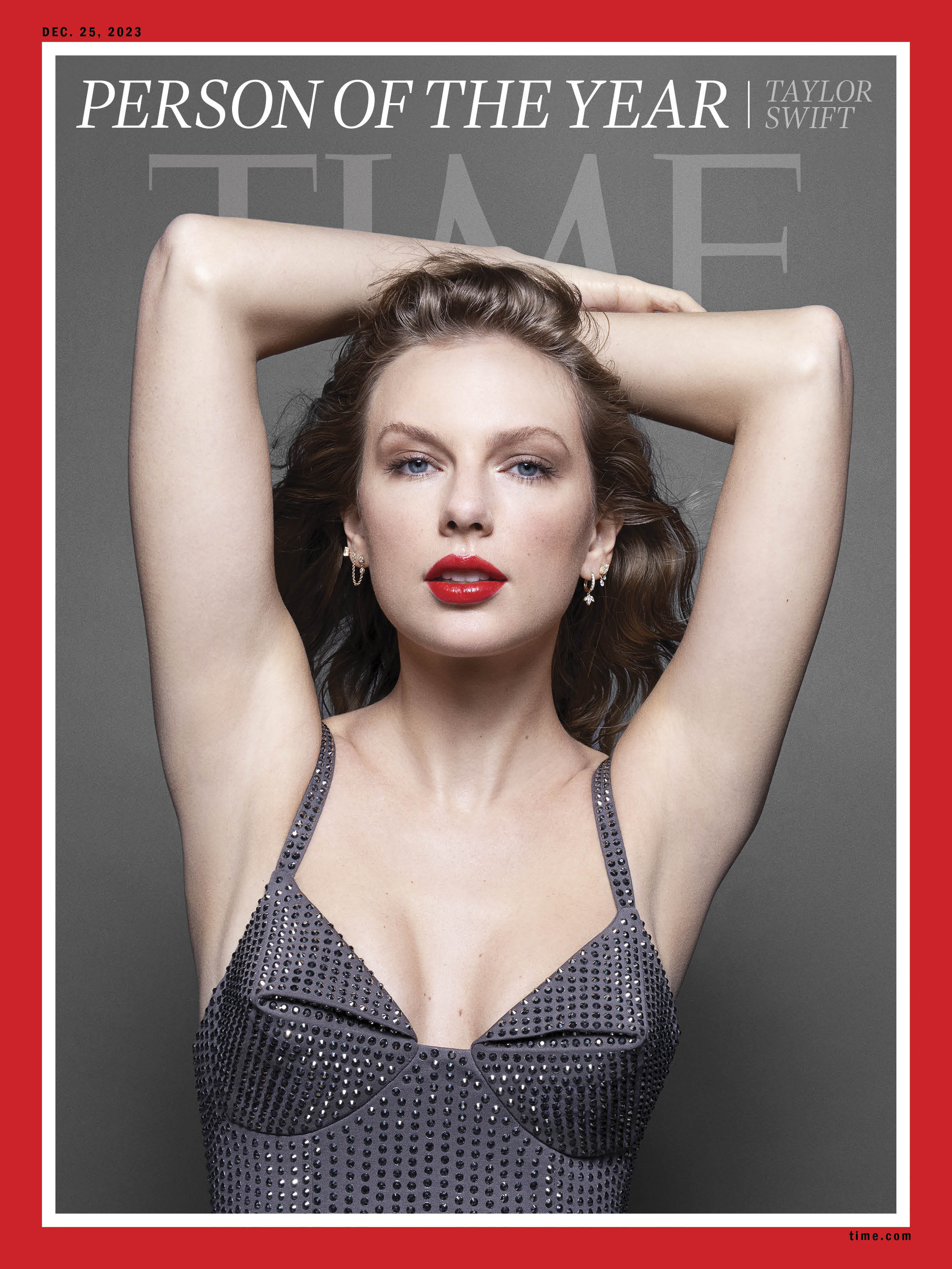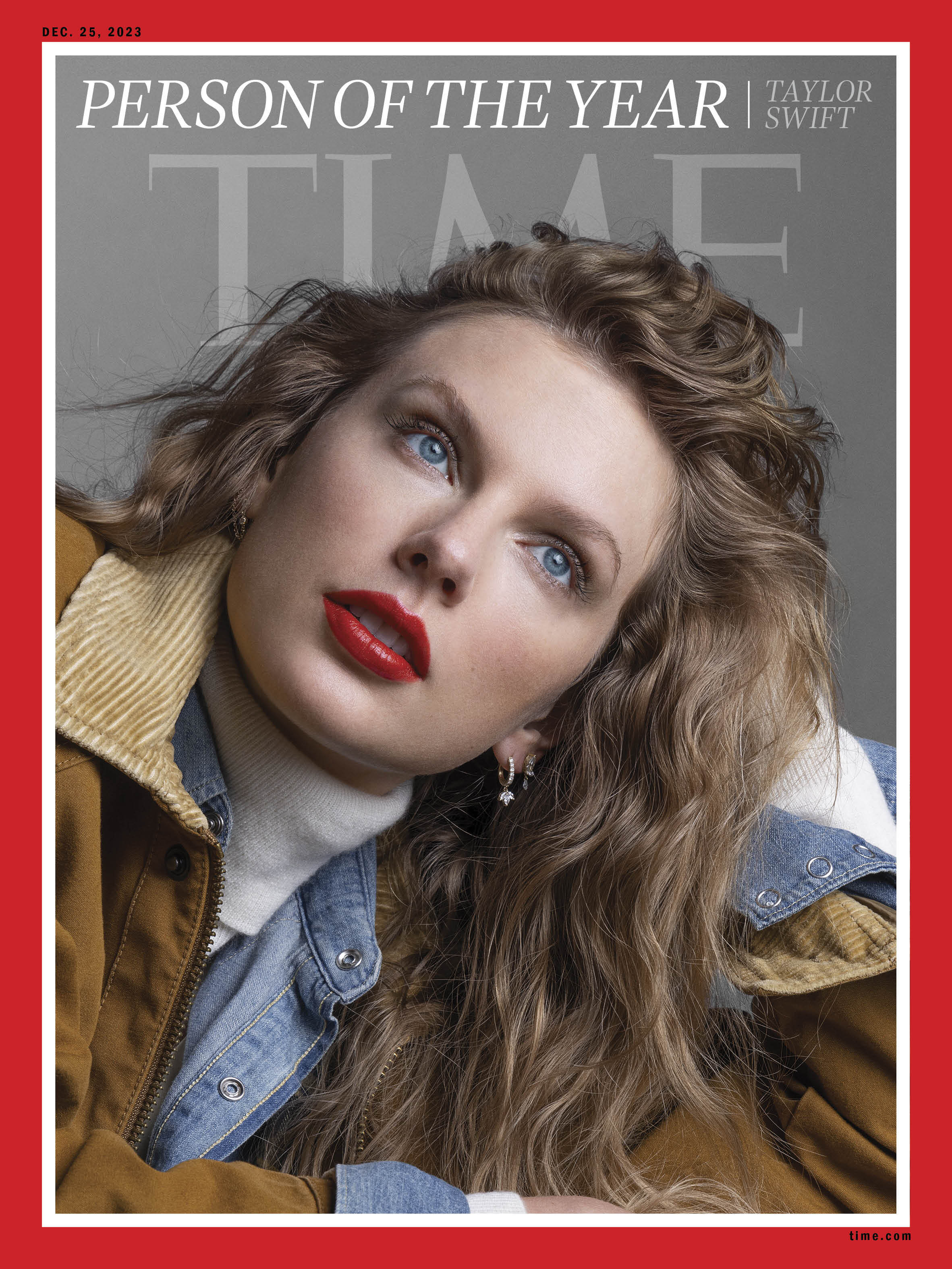Taylor Swift is telling me a story, and when Taylor Swift tells you a story, you listen, because you know it’s going to be good—not only because she’s had an extraordinary life, but because she’s an extraordinary storyteller. This one is about a time she got her heart broken, although not in the way you might expect.
Time.com – December 6, 2023
She was 17, she says, and she had booked the biggest opportunity of her life so far—a highly coveted slot opening for country superstar Kenny Chesney on tour. “This was going to change my career,” she remembers. “I was so excited.” But a couple weeks later, Swift arrived home to find her mother Andrea sitting on the front steps of their house. “She was weeping,” Swift says. “Her head was in her hands as if there had been a family emergency.” Through sobs, Andrea told her daughter that Chesney’s tour had been sponsored by a beer company. Taylor was too young to join. “I was devastated,” Swift says.
But some months later, at Swift’s 18th birthday party, she saw Chesney’s promoter. He handed her a card from Chesney that read, as Swift recalls, “I’m sorry that you couldn’t come on the tour, so I wanted to make it up to you.” With the note was a check. “It was for more money than I’d ever seen in my life,” Swift says. “I was able to pay my band bonuses. I was able to pay for my tour buses. I was able to fuel my dreams.”

Listening to Swift share this, on a clear fall afternoon in her New York City apartment, I’m struck by how satisfying the story is. There are high stakes at the outset; there are details, vivid and sensory; there’s a twist that flips the action on its head; and there’s a happy ending for its hero. It takes her only about 30 seconds to recount this, but those 30 seconds contain an entire narrative world.
I’m not surprised. Swift has a preternatural skill for finding the story. Her anecdote about Chesney symbolizes a larger narrative in Swift’s life, one about redemption—where our protagonist discovers new happiness not despite challenges, but because of them. Swift, as we’ll discuss, took a few hits to get here. “I’ve been raised up and down the flagpole of public opinion so many times in the last 20 years,” she says as we tuck into a cozy den off the kitchen to talk, and she kicks off her shoes and curls up onto the sofa. “I’ve been given a tiara, then had it taken away.” She is seemingly unguarded in conversation, reflective about both where she’s been and where she finds herself now. After all, while she’s long been one of the biggest entertainers in the world, this year is different. “It feels like the breakthrough moment of my career, happening at 33,” she says. “And for the first time in my life, I was mentally tough enough to take what comes with that.” This is her story—even if she’s now so high that it’s hard to believe she was ever low.

Swift’s accomplishments as an artist—culturally, critically, and commercially—are so legion that to recount them seems almost beside the point. As a pop star, she sits in rarefied company, alongside Elvis Presley, Michael Jackson, and Madonna; as a songwriter, she has been compared to Bob Dylan, Paul McCartney, and Joni Mitchell. As a businesswoman, she has built an empire worth, by some estimates, over $1 billion. And as a celebrity—who by dint of being a woman is scrutinized for everything from whom she dates to what she wears—she has long commanded constant attention and knows how to use it. (“I don’t give Taylor advice about being famous,” Stevie Nicks tells me. “She doesn’t need it.”) But this year, something shifted. To discuss her movements felt like discussing politics or the weather—a language spoken so widely it needed no context. She became the main character of the world.
If you’re skeptical, consider it: How many conversations did you have about Taylor Swift this year? How many times did you see a photo of her while scrolling on your phone? Were you one of the people who made a pilgrimage to a city where she played? Did you buy a ticket to her concert film? Did you double-tap an Instagram post, or laugh at a tweet, or click on a headline about her? Did you find yourself humming “Cruel Summer” while waiting in line at the grocery store? Did a friend confess that they watched clips of the Eras Tour night after night on TikTok? Or did you?

Her epic career-retrospective tour recounting her artistic “eras,” which played 66 dates across the Americas this year, is projected to become the biggest of all time and the first to gross over a billion dollars; analysts talked about the “Taylor effect,” as politicians from Thailand, Hungary, and Chile implored her to play their countries. Cities, stadiums, and streets were renamed for her. Every time she came to a new place, a mini economic boom took place as hotels and restaurants saw a surge of visitors. In releasing her concert movie, Swift bypassed studios and streamers, instead forging an unusual pact with AMC, giving the theater chain its highest single-day ticket sales in history. There are at least 10 college classes devoted to her, including one at Harvard; the professor, Stephanie Burt, tells TIME she plans to compare Swift’s work to that of the poet William Wordsworth. Friendship bracelets traded by her fans at concerts became a hot accessory, with one line in a song causing as much as a 500% increase in sales at craft stores. When Swift started dating Travis Kelce, the Kansas City Chief and two-time Super Bowl champion, his games saw a massive increase in viewership. (Yes, she somehow made one of America’s most popular things—football—even more popular.) And then there’s her critically hailed songbook—a catalog so beloved that as she rereleases it, she’s often breaking chart records she herself set. She’s the last monoculture left in our stratified world.
It’s hard to see history when you’re in the middle of it, harder still to distinguish Swift’s impact on the culture from her celebrity, which emits so much light it can be blinding. But something unusual is happening with Swift, without a contemporary precedent. She deploys the most efficient medium of the day—the pop song—to tell her story. Yet over time, she has harnessed the power of the media, both traditional and new, to create something wholly unique—a narrative world, in which her music is just one piece in an interactive, shape-shifting story. Swift is that story’s architect and hero, protagonist and narrator.

This was the year she perfected her craft—not just with her music, but in her position as the master storyteller of the modern era. The world, in turn, watched, clicked, cried, danced, sang along, swooned, caravanned to stadiums and movie theaters, let her work soundtrack their lives. For Swift, it’s a peak. “This is the proudest and happiest I’ve ever felt, and the most creatively fulfilled and free I’ve ever been,” Swift tells me. “Ultimately, we can convolute it all we want, or try to overcomplicate it, but there’s only one question.” Here, she adopts a booming voice. “Are you not entertained?”


